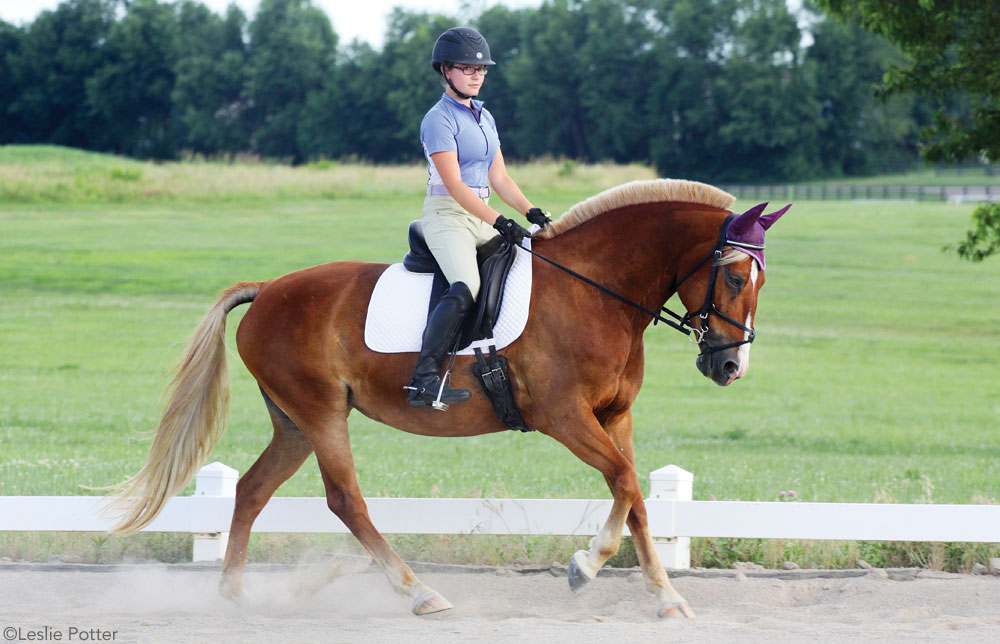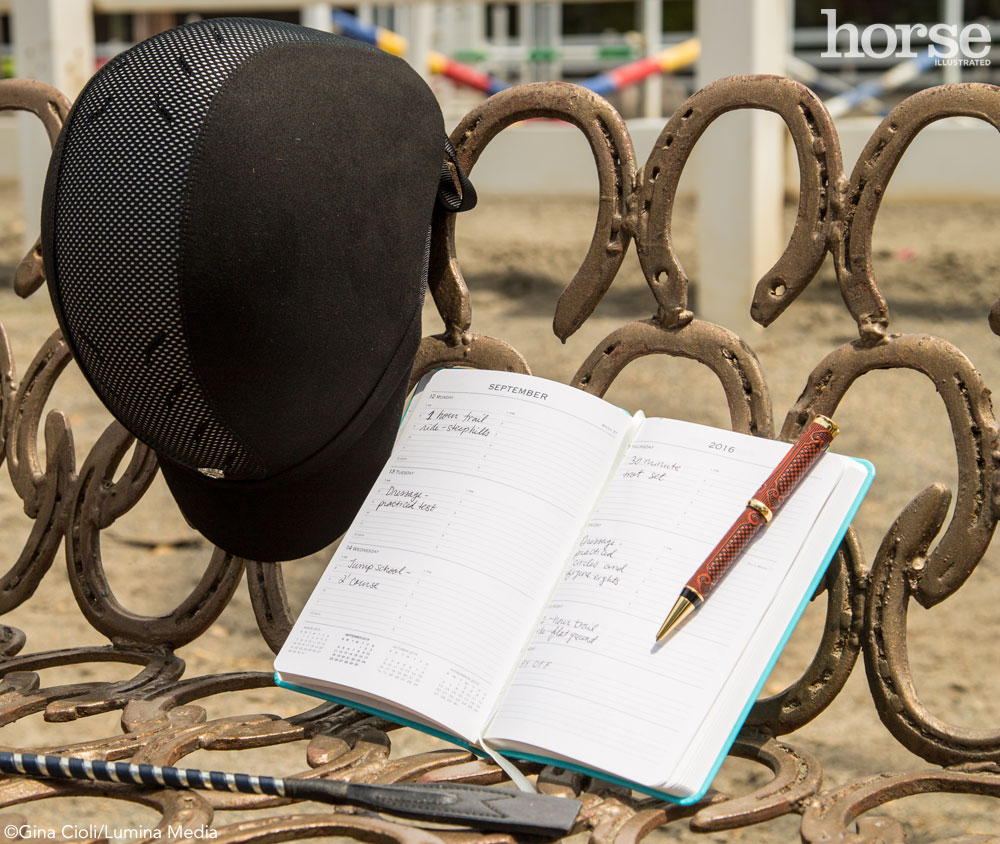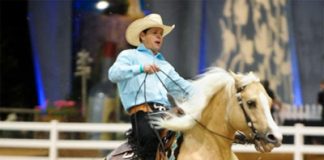
Most riders agree they stay better focused and get more out of a lesson or a clinic than when riding on their own. While we’d all love extensive access to expert instruction, riding effectively by yourself is part and parcel of good horsemanship.
“The first task of any ride is to achieve the state of mind and body where your horse is ready to work,” says Drumm. Think supple, relaxed, and focused on you with an attitude of cooperation.
Set the Tone
“The thing to remember is you have to start where your horse is,” says Drumm. “If it’s a hot day, or your horse worked hard the day before, or he was turned out all day, he’s probably quiet and can go straight to work.”
If your horse doesn’t need to be longed to work off excess energy, start your ride with at least 10 minutes of brisk walking in a relaxed frame. This is especially important for horses kept in stalls and senior equines that can start out a little creaky.
She recommends working within one gait before moving on to the next. Include basic schooling figures, stretching and transitions. Pay attention to details: for example, your horse should be supple in both directions, and aligned on both straight and bending lines, meaning his hind feet follow in the tracks of his front feet.
To Plan or Not to Plan
Have a plan, but also be ready to deviate from it.
“A plan gives you a goal and a starting point, but with horses you never know what’s going to happen,” says Drumm. “You have to be prepared to change course at any time, depending on whatever issues come up.”

Hot to Trot
On the other hand, if your horse comes out overly energetic, you may first have to work off some excess steam.
“Horses that are full of energy need to move,” says Drumm. “If he seems rideable, go ahead and start trotting and cantering; I feel it’s good to let them move at the pace they’re comfortable. Work with your horse until he’s relaxed and able to stretch through his topline.”
On the other hand, some horses require a little extra work before a productive schooling session. “If you bring your horse in and his head is up, he’s snorting, and he scares you, you need to do some ground work before you even get on,” she adds.
Skill Set
Once your horse is ready to work, you can reinforce existing skills or introduce your horse to something new. However, Drumm cautions riders to be realistic.
“When you start a new exercise, you can’t go from 1 to 10; you have to go from 1 to 2, and so on,” she says. When your horse gives you an inkling of what you’re asking for, reward him and give him a break. “Don’t over-drill. If you put too much pressure on your horse and yourself all the time, it can get tense for both of you.”
Budget Right
“Even if you don’t have much time, deal with the horse as if you did,” says Drumm. She circumvents that rushed feeling by setting an alarm for five minutes, at which point she moves on.
“Then I forget about time and work step-by-step as the horse is ready, from one stage to the next,” she says. “The amount of time you have can’t supersede what the horse’s needs are.” Drumm recommends saving new concepts or more difficult work for open-ended days.
Bite-Size Pieces
Often, riders will skip getting on if they feel too much of a time crunch, but Drumm advises that you do what you can with the time that you have.
“Amateurs often don’t spend enough time with their horses because it’s so precious,” she says. “With a job and a family, trying to fit enough time in with your horse is difficult. Do as much as you can as often as you can. Even if you only have a short window, it’s always worth going to the barn. The more consistent you can be with your horse, the better your results will be.”
All’s Well That Ends Well
Be sure to end on a positive note. “It’s important to finish with something the two of you find easy and fun before cooling out,” says Drumm.
“The horse should end the session more relaxed and happy than when he started. The end is as important as the beginning.”
Take it on the Road
When you’re at a show, find a space where you can safely school your horse, says Drumm. At some venues, there may be multiple areas available for riding, while at others you may need to join the hubbub in a busy arena.
Many horses benefit from watching the warmup from outside first before joining the commotion. Be sure to plan for more time than you think you need.
“One of the mistakes people make at horse shows is to not give themselves enough time,” says Drumm. Remember that your horse may be excited, so what seems like extra time may actually be just what’s needed to acclimate and prepare.
Get out there, keep it simple, and have fun!
Natalie DeFee Mendik is an award-winning journalist specializing in equine media. Her personal horse passions include dressage and vaulting. Visit her online at www.mendikmedia.com.
This article originally appeared in the September 2016 issue of Horse Illustrated magazine. Click here to subscribe!






